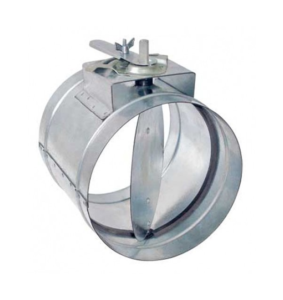Both VAV and VCD are components used in HVAC systems to manage airflow, but they serve slightly different purposes:
VAV (Variable Air Volume):
Function:
VAV is a system design approach that regulates the airflow volume delivered to different zones within a building.
Components:
It involves a VAV terminal unit installed in each zone. This unit typically includes a reheat coil (optional), a damper, and a sensor that monitors temperature or pressure.
Operation:
The VAV system adjusts the airflow to each zone based on the cooling or heating demand. For example, if a zone gets too hot, the sensor sends a signal to open the damper in the VAV terminal unit, allowing more cool air to flow into that zone. Conversely, if a zone gets too cold, the damper might close partially to restrict airflow.
Benefits:
VAV systems offer several advantages:
Improved Comfort:
By delivering the right amount of conditioned air to each zone, VAV systems ensure consistent temperatures and better occupant comfort.
Energy Efficiency:
By adjusting airflow based on demand, VAV systems can potentially reduce energy consumption for heating and cooling compared to traditional constant air volume (CAV) systems.

VCD (Volume Control Damper):
Function:
A VCD is a specific type of damper used within an HVAC system. It regulates the airflow volume through a specific section of ductwork. Unlike a VAV system, a VCD doesn’t necessarily involve temperature sensors or automatic control.
Components:
It’s a simple device with a movable blade that can be adjusted to restrict or allow airflow.
Control Mechanism:
-
- Manual: Adjusted by hand using a screw or lever mechanism.
- Motorized: Controlled electronically for automatic operation.
Applications:
-
- Balancing airflow throughout the duct system.
- Creating separate temperature zones (often in conjunction with a thermostat or building automation system for motorized VCDs).
- Regulating airflow in specific areas, like reducing airflow to unoccupied rooms.
Here’s a table summarizing the key differences:
| Feature | VAV System | VCD (Volume Control Damper) |
|---|---|---|
| Function | Manages airflow to each zone | Regulates airflow in ductwork |
| Components | VAV terminal unit with damper, sensor (optional) | Movable blade |
| Control Mechanism | Automatic based on zone demand | Manual or motorized |
| Applications | Consistent comfort, energy efficiency | Balancing airflow, zoning, specific area control |


